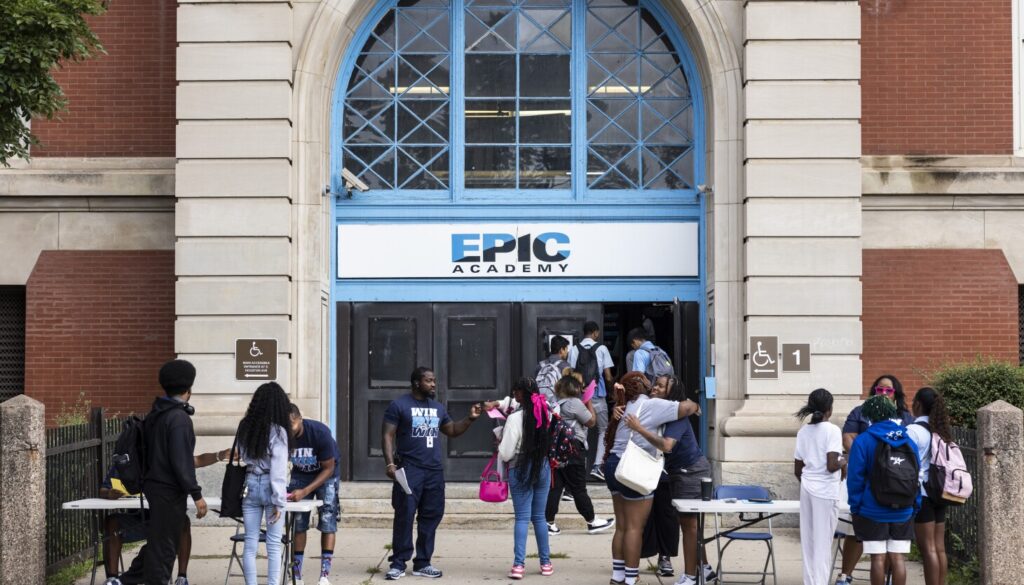Chicago Public Schools just announced a new, five-year strategic plan dubbed “Together We Rise,” which the Board of Education voted to ratify.
Engaging in a thorough strategic planning process is typically a positive exercise for school boards and their administrators. When done well, the process allows for the thoughtful input of all key stakeholders — like parents, students, faculty, support staff, administrators and taxpayers.
The plan identifies a district’s strengths, weaknesses, opportunities and challenges, and it helps create a logical, data-informed basis for tailoring policies to move the district forward to reach the desired educational, facilities management and fiscal goals.
From an educational standpoint, the strategic plan focuses on ensuring every student receives a well-rounded education from whatever school they happen to attend, including everything from high-quality teaching and rigorous academics to music, arts and sports programs. The plan also emphasizes the importance of meeting the social and emotional learning needs of students and delivering appropriate support services.
The good news is the academic initiatives that focus on building the capacity of all schools to meet the needs of their students happen to comport with internationally recognized best practices in education.
According to Michael Fullan, professor emeritus of the Ontario Institute for Studies in Education and one of the world’s most respected authorities on education, all the data confirm that building the capacity of a public education system — by investing taxpayer dollars in evidence-based approaches to things like pedagogy, teacher professional development, collaboration, mentoring, social/emotional learning and induction — ultimately results in enhanced academic performance.
Fullan’s research is especially pertinent in Illinois, which recently enacted a school funding formula that’s tied to covering the cost of what the evidence shows works academically. So many of the educational practices championed in the CPS strategic plan are both supported by the evidence and reinforced by the state’s school funding formula.
How much will elected board ‘buy in?’
That said, the timing of this particular strategic plan is a tad awkward, given in just a few months the school board will be radically transformed from its current, seven-member format, all of whom are appointed by the mayor, to a 21-member board, including 10 who will be elected by the general public and the other 11 who will be mayoral picks.
In 2027, all board members will be elected. This means the level of board buy-in to this strategic plan is somewhat up in the air, especially given the attention the race for CPS school board has garnered.
On the one hand, the Chicago Teachers Union is knocking on doors supporting various candidates who are likely to back many of the educational initiatives identified in the strategic plan, particularly those that call for enhanced investment in neighborhood schools.
On the flip side, advocates of more choice in public education, like the Illinois Network of Charter Schools and Urban Action Center, have gone on record indicating they will commit substantial resources to back candidates who believe the way to drive enhanced student achievement is through school choice.
So the new school board may very well become the weak link in the effort to implement the strategic plan’s educational initiatives with fidelity.
That would be unfortunate, especially if the failure to allocate sufficient resources to all schools broke down over a misplaced ideological commitment to school choice. Look, does CPS have some excellent, high-achieving charter schools? Yes, it does. It also has some that have underperformed. And that’s to be expected.
“The national data at this point shows that there are some really good charter schools, some really bad charter schools and a lot that are essentially no different in terms of effectiveness,” said Chris Lubienski, director of the Center for Evaluation and Policy Analysis at Indiana University,
The true question isn’t whether there are some high-performing charters, but rather whether school choice can be a viable predicate for improving student performance system-wide. Here the data show the answer is a resounding no.
Indeed, over the last 10 years — as various school choice measures like vouchers were scaled up from small, targeted initiatives to large, state-wide programs — every study, including those done by choice advocates, has found negative impacts on achievement for students overall.
There are many reasons for that, but key among them is the very basis of a competitive model: For competition to work, it has to generate winners and losers. In a public education system, it’s not OK to have loser schools.
Better then to do what the evidence shows actually enhances academic achievement for all students: Invest in building the capacity of every school to meet the educational needs of the students it serves.
Ralph Martire is executive director of the Center for Tax and Budget Accountability, a nonpartisan fiscal policy think tank, and the Arthur Rubloff Professor of Public Policy at Roosevelt University.
Send letters to letters@suntimes.com.

